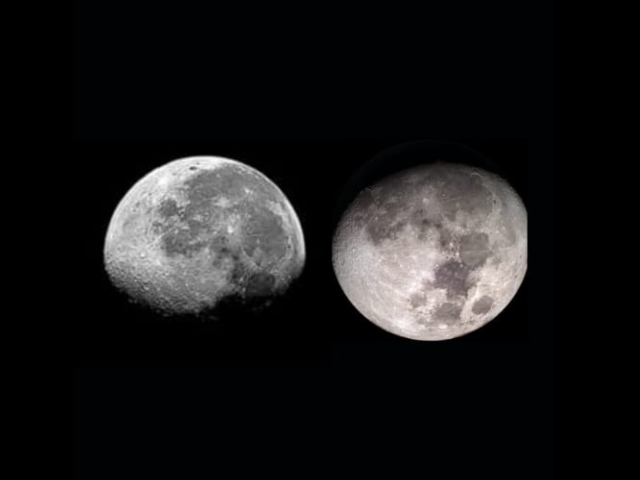
-
Earth Is About To Get A Second Moon, But Only For A Short While
19 Sep 2024 by Tayla in Lifestyle, Science, Space, Tech/Sci, World
[imagesource:wikimediacommons]
Earth’s closest celestial body, the moon, will have company in the next week.
From September 29 until November 25, astronomers have calculated that 2024 PT5— what scientists think is an asteroid but have dubbed a “mini-moon”—will be looping around Earth.
After its little orbit around the Earth, it will begin its journey back through other parts of our solar system.
While this may not be the first time we’ve seen something like this happen, it is still a fun phenomenon.
The asteroid, which was discovered last month by NASA, originated from the Arjuna asteroid belt, adding to the mystery of its cosmic journey, Time reports.
According to NASA, a Near-Earth Object is any body, asteroid or otherwise, that is “nudged” by the gravitational attraction of nearby planets that pushes them to Earth’s neighborhood.
A recent paper in Research Notes of the AAS unveils how certain asteroids get ensnared by Earth’s gravitational pull, occasionally transforming into temporary mini-moons. The study even presents detailed calculations predicting the trajectory of a particular asteroid that researchers believe will soon orbit our planet like a fleeting second moon.
This isn’t a rare phenomenon either—back in 2006, a similar asteroid danced around Earth for an entire year, proving that cosmic visitors often stay a little longer than expected. Another asteroid played the role of Earth’s second moon for several years before departing in 2020.
Now, researchers are focusing on a new celestial body, discovered in August through the Asteroid Terrestrial-Impact Last Alert system. While earlier studies suggested this asteroid might be on a collision course with Earth, experts now believe it will skim past us, only to be caught in Earth’s gravitational net, potentially turning it into a temporary satellite.
Thanks, buddy.
Once captured, the asteroid is expected to orbit Earth for roughly 53 days before being catapulted back into space. Measuring just 10 meters across, it’s not a giant, but its brief visit offers a rare viewing opportunity.
With such a short orbital stay, stargazers will have only a limited window to catch a glimpse. In all honesty, it might be too small to see, but one can try anyway!
The Arjuna asteroid belt consists of numerous asteroids that, like Earth, orbit the Sun. While some have suggested this asteroid could be a piece of space junk, researchers argue that’s unlikely this time as its trajectory closely mirrors that of a naturally occurring object, not one of human origin.
In fact, Paul Chodas, director of the Center for Near Earth Object Studies at NASA’s Jet Propulsion Laboratory, said 2024 PT5 is possibly a piece of ejecta from an impact on the moon, meaning the mini-moon may have originated as a piece of the original moon.
So it might be accurate to say the moon will be getting a baby, not a buddie.
[source:time]
Latest News
-
Powerful South African Short Film ‘The Last Ranger’ Scoops Up Awards And International Praise
[imagesource: Cindy Lee Director/Facebook] A compelling South African short film, The L...
-
Caprice Summer Has Started With Brunch (But Better) This Saturday + Other Lush Camps Bay Parties
[imagesource: Instagram/cafecaprice] Is it just me or has Summer been taking its sweet ...
-
Notre-Dame Cathedral In Paris Restored And Ready For Grand Reopening After Devastating Fire
[imagesource:wikimedia] After five years of work and millions in donations, The Notre-D...
-
Self-Destructing Number Plates: The Future Of Gauteng’s Roads Or Spy-Tech Fantasy?
[imagesource:worldlicenseplates.com] What sounds like a James Bond movie is becoming a ...
-
I Changed My Relationship With Food And You Won’t Believe What Happened Next
[imagesource:supplied] As the festive season approaches, it's time to deck the halls, g...
-






























